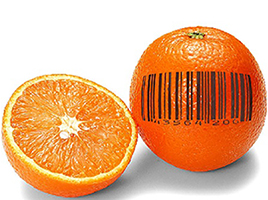Are you dipping your toes into Software-as-a-Service (SaaS)? Good! That’s a start, but what you really want to do is jump into the deep end. The water is fine. In fact, it’s heavenly.

Recent peer-reviewed academic research surveyed 554 organizations with varying levels of SaaS deployed and examined the relationship between different levels of SaaS adoption and business agility. The research found that the more SaaS in the organization, the better the agility. Agility was measured by asking respondents whether SaaS helped them make decisions faster and whether SaaS helped them react faster to market pressure. The agility contributed to higher revenues, lower costs, and higher productivity. But why?
Empirical casework demonstrated that SaaS in the enterprise allowed managers to understand competitive actions faster. The real-time, ubiquitous nature of SaaS supports the distribution of information in a more direct way. Managers can pull their own reports from anywhere, using a single source of corporate data stored in the cloud, and get the information they need to make decisions. No more emailing spreadsheets from one management layer to the next, sanitizing results along the way until no one knows what’s going on. You can’t make the right decisions when you don’t have the right data. What’s holding you back? There were a number of objections to SaaS that were found in the research and one of the objections was vendor lock-in. Let’s look at the alternatives to vendor lock-in.
Alternatives to SaaS Vendor Lock-in
How about developing your own application? Then you would own it and you wouldn’t have to pay the monthly fees, right? You wouldn’t be locked in then. What about building your own car, or building your own electricity grid? SaaS and Cloud have been called the fifth utility. So why build something that is readily available and affordable for anyone, even your biggest competitor? Let’s consider that.
What if you build your own application, and your biggest competitor buys a SaaS application to do the same thing? Depending on the complexity, your application could take 6 months to 5 years to develop and roll out while your competitor has the capability you are building available immediately in the cloud, everywhere, for everyone. Their managers are making decisions using real-time data.
How about a real-life example?
I worked with an Automotive OEM, who had deployed SaaS in a division for several years. A marketing manager in the same division noticed that his business was being lost but he didn’t know why. He went to IT to see if they could build an application to help him figure it out. They said they could, but it was going to take about a year and cost over $100K. The manager didn’t have the time or the money. So, he went to the administrator of the SaaS system and asked if she had any ideas. She put a couple of questions into the Dealer Profile and over the next few weeks, the field reps asked the dealers what was going on and put their responses into the system. The marketing manager pulled his reports in real-time and by the third week, he could see that a competitor had launched a major initiative against their most profitable business. They initiated a counter-program and mitigated the issue. Just like that. The manager had the information he needed in time to fix the problem. Imagine if he had waited for IT to build him his application? How many accounts would they have lost? How many accounts are you losing while you are waiting?
How Can SaaS Enable Business Agility and Security?
Agility means fluidity, movement, and speed. To be fluid, fast, and effective, you have to have the right information at the right time. SaaS enables continuously up-to-date applications that meet or exceed (if they want to be the leader and make the most money) the needs of the market.
But what about security?
The aforementioned academic research examined a number of obstacles including security. While security was the number one risk back in the early literature (2008 – 2014), as research continued SaaS and security became an advantage. Scholars determined that SaaS companies had much higher risks if their security strategy failed and so took significant measures to ensure their software offerings were safe for their customers. In contrast, it was further noted that non-technology businesses would have a very difficult time keeping up with the ever-changing challenges of maintaining a hack-proof infrastructure. Do you think your people have the skills to match the cyber threats out there today? I wouldn’t bet my business on it.
Focus on Your Business’ Core Competency
Lastly, we need to appreciate the core competency of our business, of our people. Where do we spend the big bucks to get the best people? Where do we skimp, hoping to squeak by? Be honest. Empirical work by this researcher found that IT wages at non-technology companies were far below those of technology companies, in some cases a fraction. So, the IT geniuses are going to go where the money is, you can’t blame them for that decision. Where does that leave you? Don’t be intimidated by IT candidates that can spew the latest buzzwords on the threats in cybersecurity. There are a ton, and knowing the words doesn’t mean you understand and can implement a strategy that provides security now and tomorrow and the next day.
Focus on your core competency, make your business great. Leave the non-core work to companies that make that work their core competency. It is a unique time to be in business, take advantage of the resources that are readily available.




